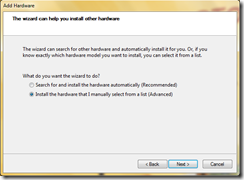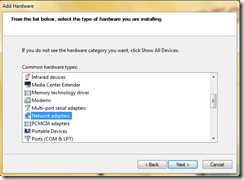So, this weekend I thought to refresh my experience with Oracle. And in that attempt, I decided to install latest of Oracle DBMS family, Oracle 11g. Now, it’s been a while since I used oracle, it was version 10g. And they have been significantly improved in version 11g, so I wanted to try them. But I think something that have not changed or may be will never change is their web interface for EM (a.k.a. Enterprise Manager). If you have not used Oracle before then for info, EM is basically their central management console for installed Oracle instance.
Now if you are installing Oracle DBMS in a system which as “Static” IP (think of it as an IP that doesn’t change with time), then you have no problem at all. But if you are like me and installing in a machine which has DHCP enabled, and its IP gets changed frequently … or just say it is your laptop or desktop at home network, then you will not be able to access this EM after sometime. The reason is, It is sticked with your IP that it assumes is static !! So, you will get “Page Not Found” message when you will try to access EM, once your IP gets changed. And worse thing is in Oracle 10g, before installation the UI (Universal Installer) checks for pre-requisites and it warns you about having DHCP enabled but in Oracle 11g you will not see anything like that.
So, back to my experience. I installed Oracle 11g R2 as usual, and I fired up the EM. It worked just fine at first, but after sometime when I tried to run it again I was greeted with same old message “Page Not Found”. And I almost smashed my laptop ![]() (I know, sometimes I over react to things) … then I realized then I forgot the most important step of preparation, Installation of Microsoft Loopback Adapter !!
(I know, sometimes I over react to things) … then I realized then I forgot the most important step of preparation, Installation of Microsoft Loopback Adapter !!
Installing Microsoft Loopback Adapter
Things look very different in Windows 7, so it was a bit difficult to find “ADD Hardware Wizard” to add an adapter. Then I found that I can run it using “hdwwiz.exe” and after that it is same as we used to with older windows versions. Following are screenshots of whole installation and configuration procedure.
 |
 |
 |
 |
 |
And, next step is to install Oracle 11g R2.
And it works just fine !!!
But what I really don’t get is, why the hell Oracle don’t want to create some sort of application frontend rather than going for web interface ?? They can look at what their competitors are providing, like SQL Server Management Studio (for SQL Server), or Data Studio (for IBM DB2), or MySQL Workbench (for MySQL … ow not competitor anymore ![]() ) …
) …
That’s it for today …
It’s Just a Thought … ![]()
